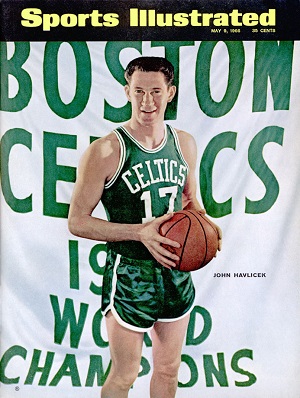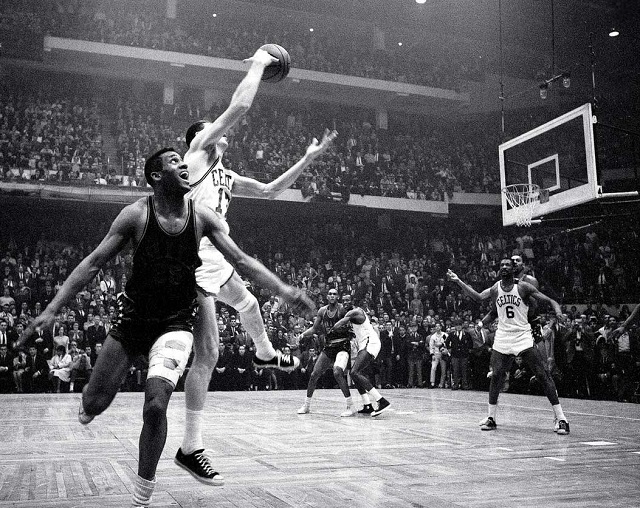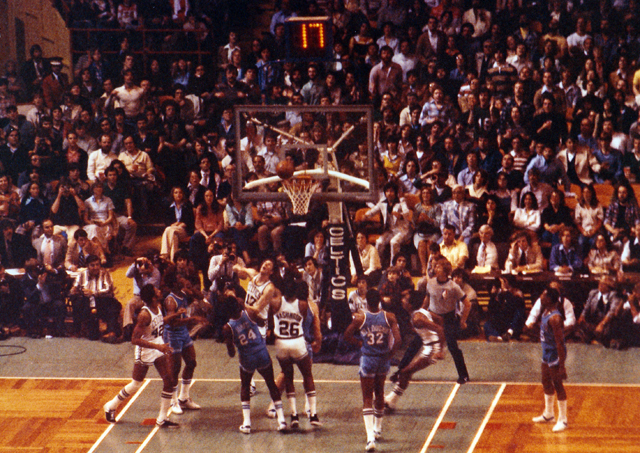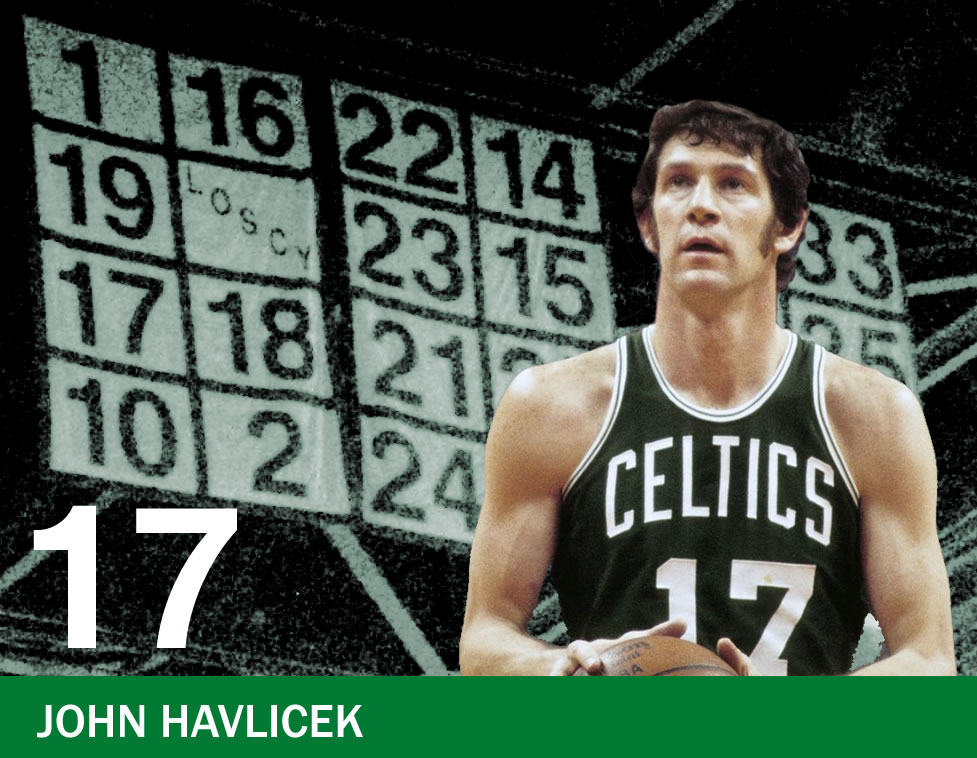From now until February 11, Red’s Army will be posting stories about the players behind the Celtics’ 22 retired numbers and that one retired nickname. Stories will be posted in the order that the numbers were retired.
John Havlicek stands apart in the Celtics pantheon because he bridged the gap between two distinct championship eras – the dynasty of the 1960s and the two-time champs of the mid-1970s – while playing at an All-NBA level throughout his 16 seasons.

Havlicek played in eight NBA Finals and won them all. In the ’60s, he was part of six title-winning teams, at first in the sixth-man role and eventually as a starter. After Bill Russell and Sam Jones retired, the Celts struggled through some down years. But when Red Auerbach rebuilt the roster to contender status, Havlicek teamed with Jo Jo White and Dave Cowens to lead Boston to titles in ’74 and ’76.
At 6’5” and 203 pounds, Havlicek was a swingman at shooting guard and small forward. He was an outstanding defender who also developed into one of the NBA’s top scorers. “He was the best all-around player I ever saw,” said Russell.
Havlicek played in a franchise-high 1,270 regular-season games, and remains Boston’s career scoring leader with 26,395 points (all before the introduction of the three-point shot). His career averages were 20.8 points, 6.3 rebounds and 4.8 assists. His highest-scoring season was 1970-71 at 28.9 points per game (second in the league).
He also appeared in 172 playoff games, playing a hair under 40 minutes per game while averaging 22.0/6.9/4.8. Five times he averaged better than 25 points per playoff game, with his peak being 1974: 27.1 PPG on 48.4% shooting, also earning the Finals MVP Award.
Fun fact: The Celtics have won two NBA Finals Game 7s on the road, in 1969 at Los Angeles and 1974 at Milwaukee. The one common denominator: John Havlicek started at forward in both.
The man they called Hondo (after a John Wayne movie, because some said he resembled The Duke) finished his career as a 13-time All-Star, 11-time All-NBA (four of those as first-team), and eight-time All-Defense. He was inducted into the Basketball Hall of Fame in 1984.
Havlicek came to Boston as the seventh overall pick of the 1962 draft. He was a two-time All-American at Ohio State, winning the NCAA championship in 1960 but twice losing the tournament final to the University of Cincinnati and Oscar Robertson. One of Havlicek’s teammates at Ohio State was future Celtic Larry Siegfried; in Boston, radio announcer Johnny Most dubbed the duo “The Bouncin’ Buckeyes.”
Hondo was an incredible athlete who does not fall into the “he couldn’t play today” category. The core of his game was that he could – and did – run all day, thanks to possessing a pulse rate in the low 40s. He simply never got tired. That made him perfect for the relentlessly fast-breaking Celtics.
Before coming to Boston, Havlicek was also drafted by the Cleveland Browns to play wide receiver. He played in preseason games and nearly made the squad, but was one of the final cuts. Havlicek is probably the only athlete able to claim both Jim Brown and Bill Russell as teammates.
One of Havlicek’s best performances was in Game 6 of the 1968 Finals, when he scored 40 to help defeat the Lakers in Los Angeles and clinch the Celtics’ 10th championship. In the 1969 Finals, he played all 48 minutes in all seven games, again beating L.A.
Hondo also holds the team playoff game record with 54 points versus Atlanta in 1973. He shot 24 of 36 from the field and added nine boards and six assists. Those 24 field goals are still an NBA record for a single playoff game (tied with Wilt Chamberlain and Michael Jordan).
One disappointment came later in those 1973 playoffs. After a 68-win Celtics regular season, Havlicek injured his shoulder versus the Knicks. He continued to play, but was unable to shoot normally, and the Cs fell in seven games.
Even if you never witnessed Hondo’s basketball career, you’ve no doubt heard his name associated with one of the most famous plays in sports history, which saved a playoff series: Havlicek Stole the Ball!

Here’s the play, with Johnny Most’s epic radio call:
[youtube https://www.youtube.com/watch?v=J4fTjcJwImw?rel=0]Here’s the history behind it all:
[youtube https://www.youtube.com/watch?v=KhpqiSC4aTo?rel=0]One more play that stands out in Havlicek’s career is his driving, leaning bank shot to put the Celtics ahead during the second overtime of Game 5 in the 1976 Finals. If he had missed, Boston would have lost. Instead, they stayed alive to win in a third OT, then won the title in Game 6. The clutch shot comes at 2:40 in this video:
[youtube https://www.youtube.com/watch?v=hmtlU_HhzHE?rel=0]The last game of Havlicek’s career was a nationally televised contest versus the Buffalo Braves (the franchise that’s now the Clippers). Neither team was playoff-bound but, at that time, the event was as highly anticipated as Paul Pierce’s upcoming number retirement.
When Havlicek was introduced with the starters, the fans at the packed Garden paid tribute to the Celtics’ heart and soul with a seven-minute standing ovation. Celtics fans today are famous for their passion; rest assured, it has always been there. There was not a dry eye in the house, including Hondo’s.
Havlicek walked to midcourt and bowed toward all four sides of the arena, then ran back to the bench swinging his arm over his head as a “let’s go!” signal. And he did: his 29 points and eight assists led the way to his final victory in green and white.
In the photo below, Havlicek scores his last two points – fittingly, with 17 seconds on the shot clock.

Havlicek’s playing stats at Basketball Reference
Biography on NBA.com Legends section
Biography on Celtics.com Legends section
www.johnhavlicekbasketball.com
The retired numbers project:
Add The Sports Daily to your Google News Feed!
